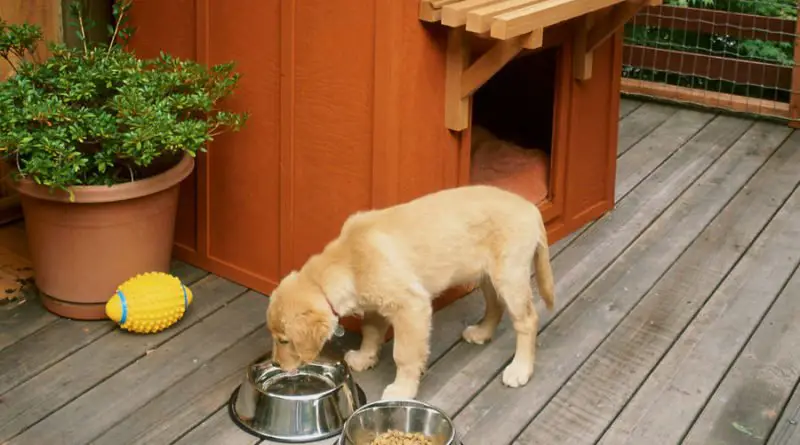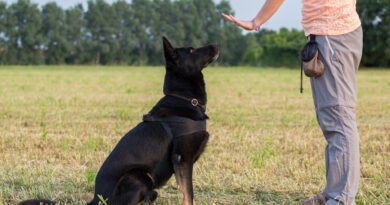Last modified on July 21st, 2021 at 1:06 am
A Step-by-Step Guide to Building a 3 x 3 Foot Insulated Dog House
Every dog deserves their very own dog house, and what better way to give your beloved pet the best dog house possible than by building it yourself. That’s why I created this step-step guide to help you through this rewarding DIY project.
This plan is tailor-made to provide a comfortable house for your dog that will keep your pets cozy during winter and summer.
An essential factor for achieving this is insulation; however, it is not always necessary, depending on your local climate.
If you’re lucky to live somewhere with warm enough weather allowing your pets to stay out in the winter and summer, you won’t need insulation. Feel free to skip those steps.
What you’ll need
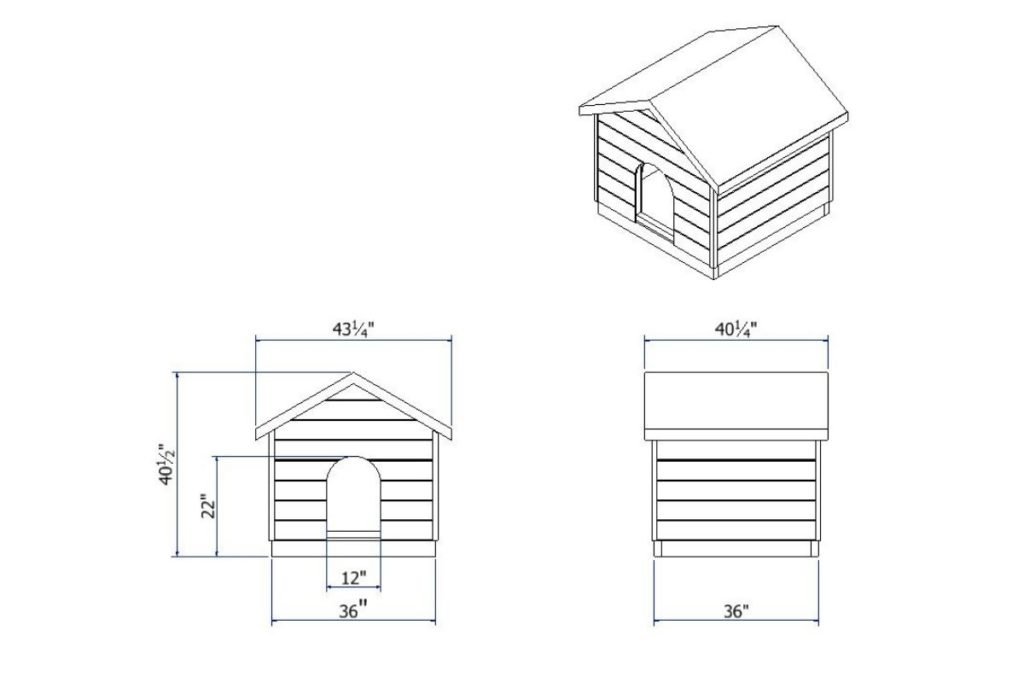
Materials
There is a load of different types of wood you could select for this project. The choice you make will most likely be based on your budget and the availability of different types in your region. For me, the choice is going to be between cedar, pine, or fir. If you want to build something that will last for years to come and have the budget for it, you might want to consider hardwood.
For my materials list, I’ve added roughly 10% as wastage. Something to remember, when using dimensional lumber, the dimensions are generally ½” less than the nominal sizing would lead you to believe. For example, for 2×4″ dimensional lumber, it measures 1 ½ x 3 ½”.
Framing Lumber
2×4 pressure-treated lumber – Total: 25′ 1 ½” or four off 8′ lengths.
2×2 pressure-treated lumber – Total: 59′ 2 ½” or eight off 8′ lengths.
Plywood Sheeting
½” pressure treated plywood – Total area: 3261 in2 or one-off 3’x3′ board and one-off 5’x3′ board.
5/16″ pressure treated plywood – Total area: 4778 in2 or three off 5’x3′ boards.
Cladding & Insulation
4 ½” Tongue and groove – Total area: 92′ 4″ or 12 off 8′ lengths.
If you plan to insulate your dog house, you’ll also need to get:
1 ½” thick foam insulation board – Total area: 4085 in2 or three off 2’x8′ boards.
Fasteners
A box of 3″ deck screws
A box of 2″ deck screws
A box of ¾” deck screws
A pack of 1″ long brads that are compatible with your brad nailer
Roofing
2640 in2 felt paper and asphalt shingles.
Tools
A Power Saw – Circular Saw, Table Saw, or Miter Saw
Jigsaw
Drill & Drill Bits
Impact Driver and Driver Bits
Brad Nailer
Corner Clamps
Step 1: Building the Base
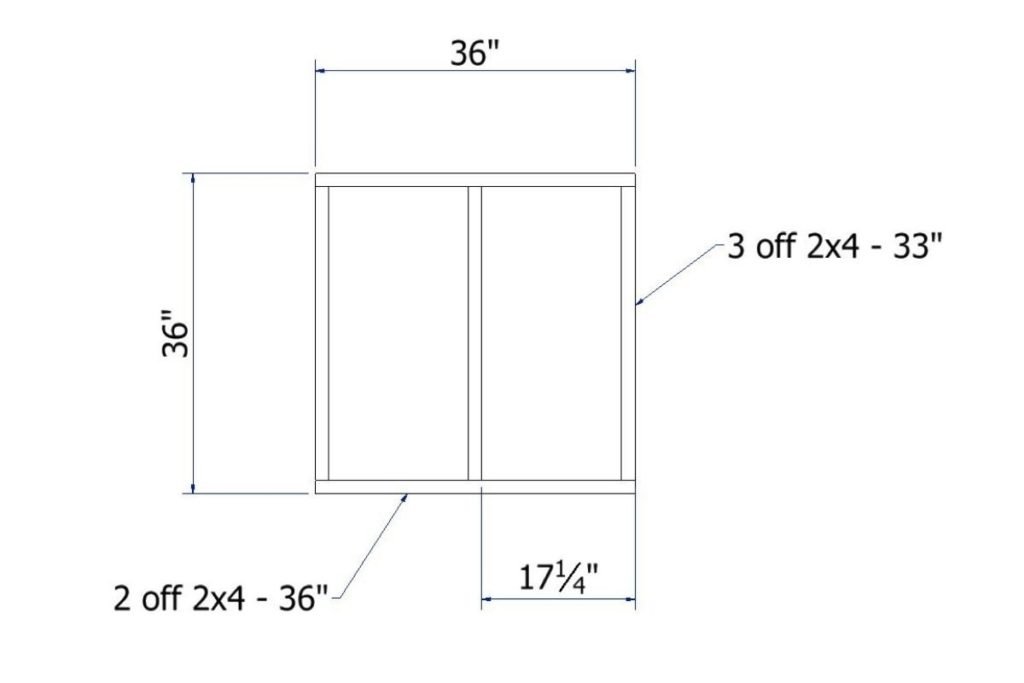
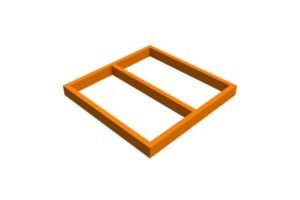
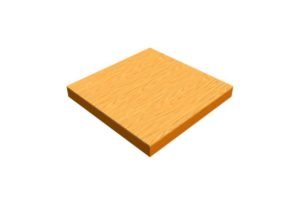
For your dog house to be strong enough for your pup’s energy bursts, you’ll need to create a solid base.
To start with, you have to cut five pieces of timber from 2×4 lengths of lumber. Two of those pieces have to be 36 inches in length, with the remaining three being 33 inches.
Screws that are three inches in length will be required to secure the pieces of wood together to create the sturdy frame of the base. Corner clamps are also recommended; they will help keep the wood in place, ensuring that the structure is nice and square.
You may encounter a common problem is ‘splitting,’ something that happens when inserting the screws in your timber along the grain. You can minimize the chances of this happening by drilling 1/8 inch pilot holes.
Now that you have finished securing the base’s frame, the next step is to screw in the sheets of plywood. For this, it is recommended that you use two-inch deck screws.
It is also important to note that the plywood sheets should be pressure-treated as this helps diminish the possibilities of rotting or the plywood becoming warped.
Step 2: Time for the Side Frames
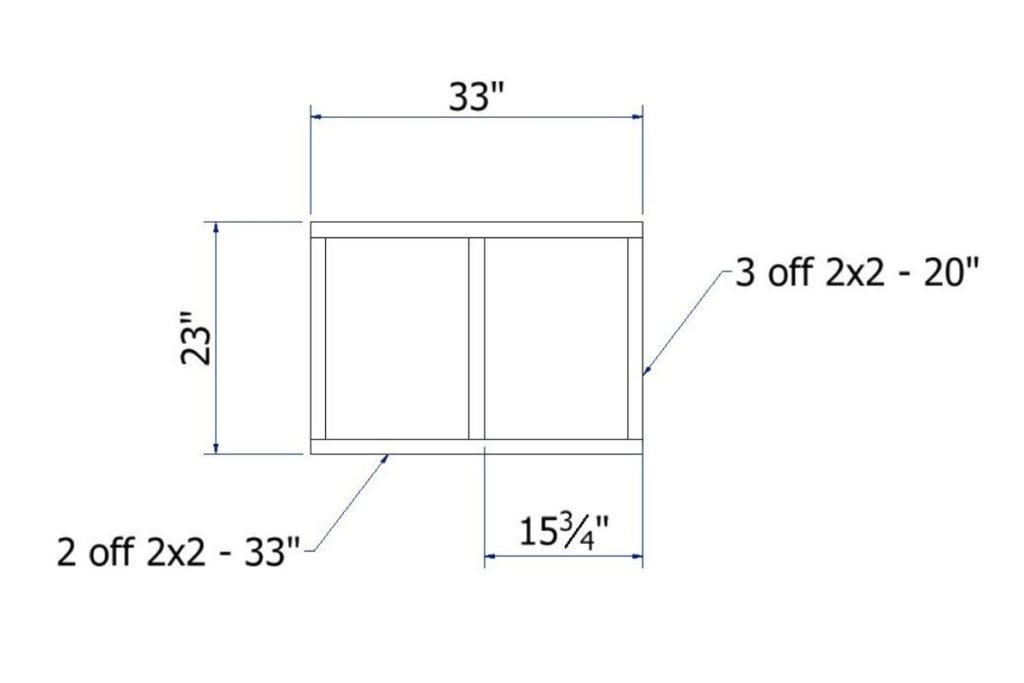
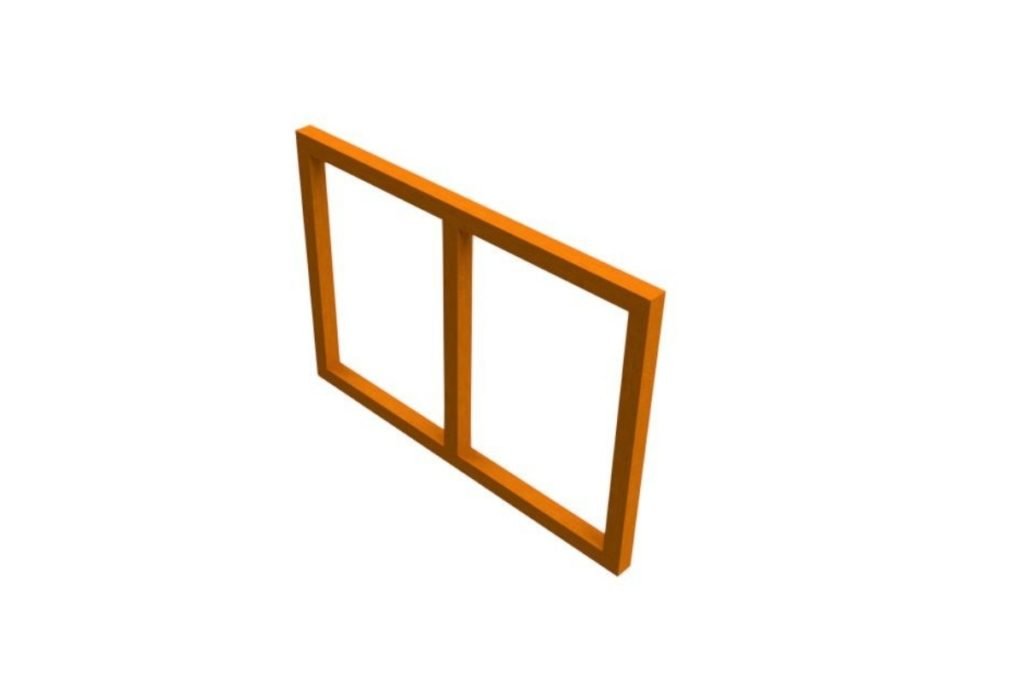
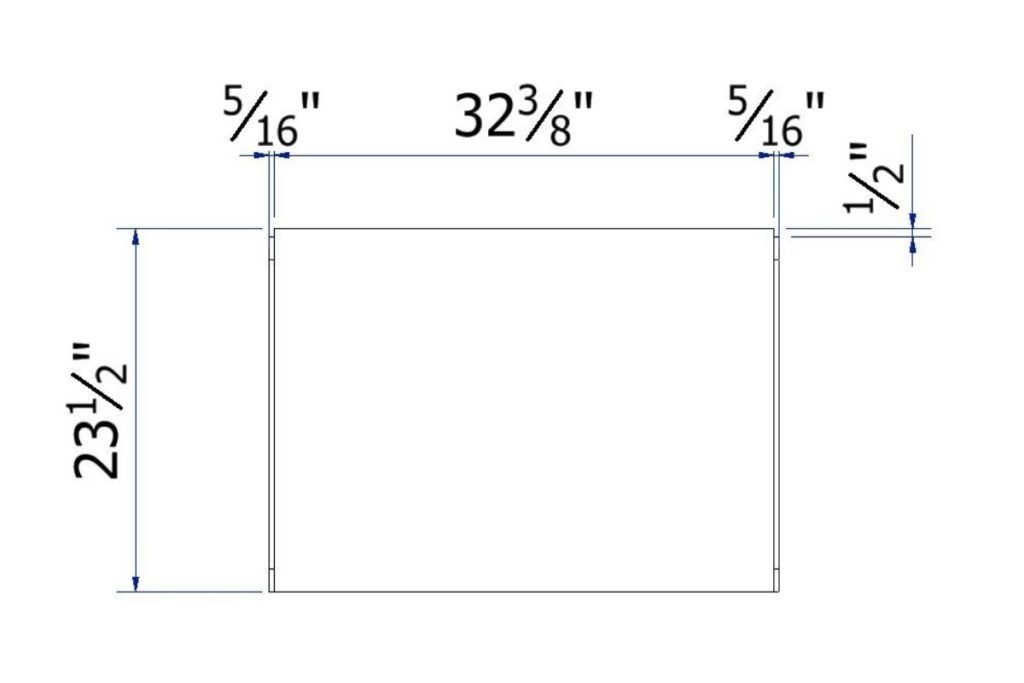

Now that you have finished the base let’s move on to the side frames.
First, you have to cut six lengths that are 20 inches in length and four that are 33 inches in length. These pieces of wood should be cut from 2×2 timber.
Check out the image above for reference on how to screw the side frames properly. In this case, as well, the corner clamps come into play. If you have access to corner clamps, you should use them to ensure that the construction is straightforward.
Here you have to use the smaller 2-inch deck screws to avoid breaking through.
Once this is done, your next job is to fit the inner plywood cladding, which will retain the insulation. This step is optional if you are not interested in insulating your four-legged friend’s home.
To carry this out, you will need two pieces of plywood board, each measuring 32 3/8 inches x 23 1/2 inches. Once these pieces of wood have been cut into size, they have to be fixed on the side of the two frames.
For reference, you can view the diagram included above. Your plywood needs to be located on both sides of the dog house’s frame. At the very top, it should be peering out by half an inch.
Once all this has been done, your final task is to ensure that everything is held in place using 3/4 inch deck screws.
Step 3: Putting Together the Frontal Frame
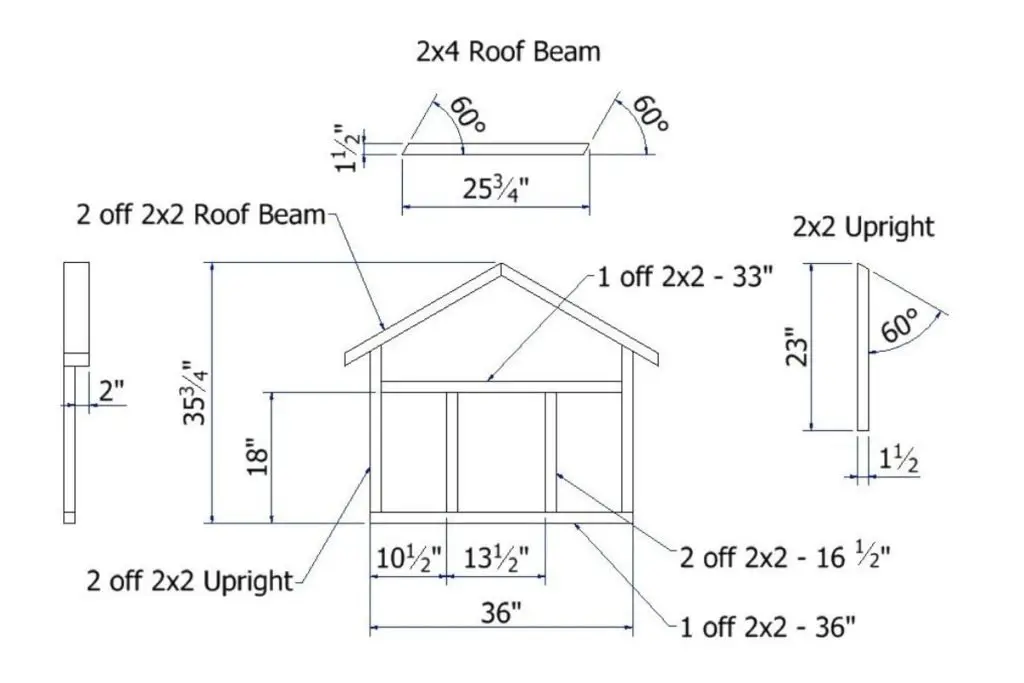
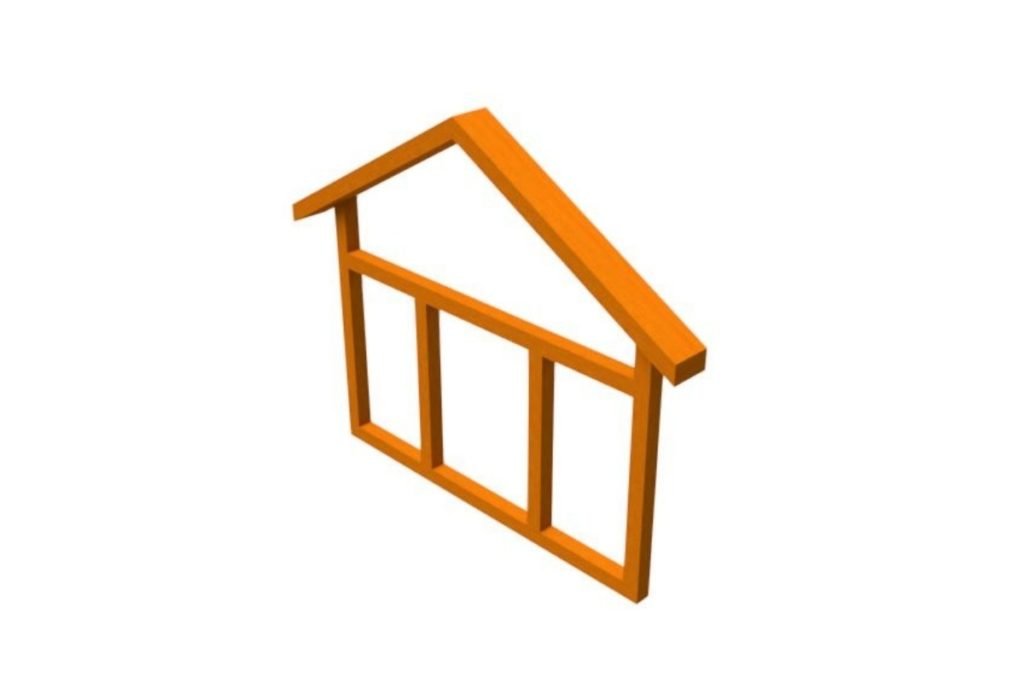
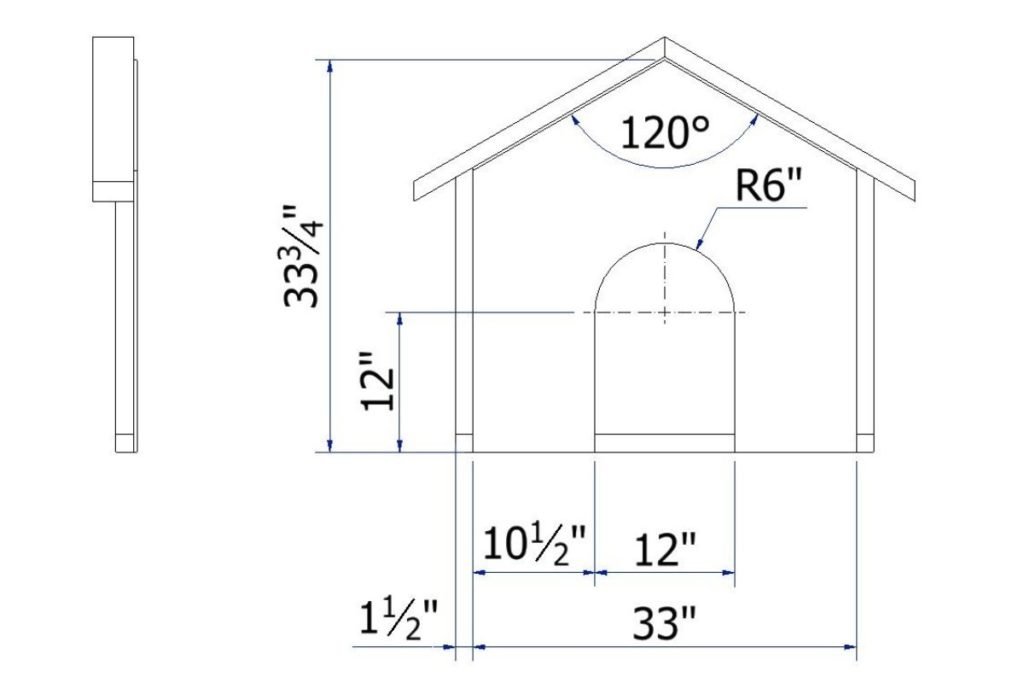
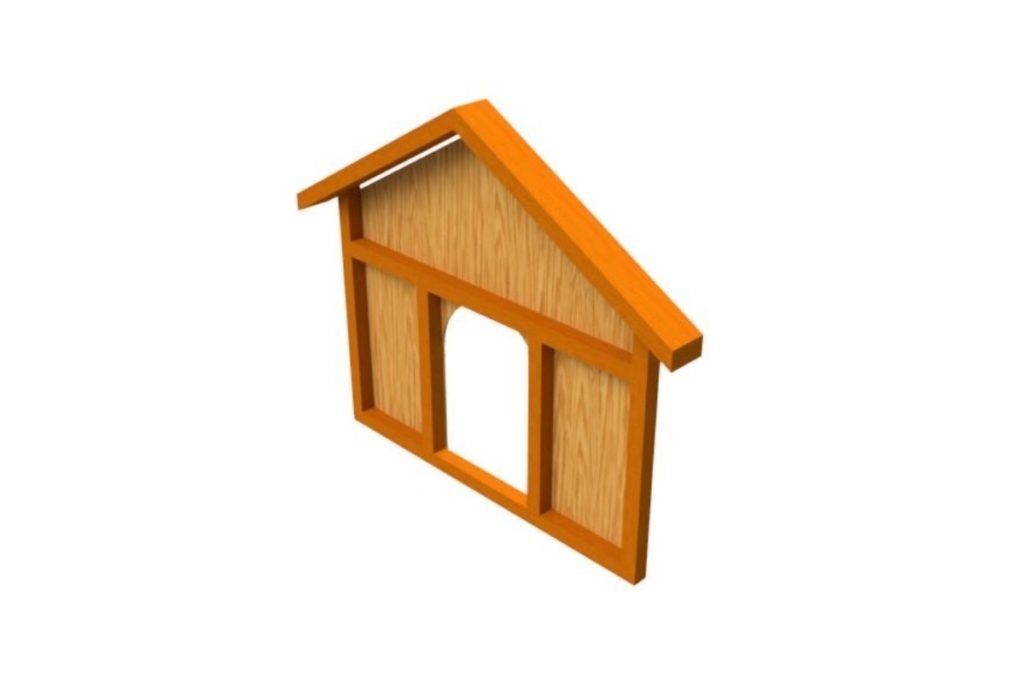
Don’t forget your pup will need an entrance. You first have to start cutting up the pieces of wood that you will need for your wooden frame.
You will need 2×2 pieces of timber for your mainframe. From this, you will have to make two 16 1/4 inch long parts. Furthermore, you will require one piece that is 30 inches long and another that is 36 inches in length.
The roof of your frame will require two beams each for the roof and also upright beams. The beams for the top will have to be cut from 2×4 timber. You will have to cut two sections that are 25 3/4 inches in length from that piece of wood.
Moreover, you have to cut a 60-degree angle into those pieces of timber. If you are stuck or want a visual aid, you can check the drawing above.
The upright beams used to back up the roof have to be cut from 2×2 chunks for timber. You have to cut them so that they are 23 inches in length. Just one end of these upright beams is required to have a 60-degree cut.
When you have finished cutting each of the sections of the dog house’s frame to the right length, your next step is to put together all of the parts. To do this, you should use 2-inch deck screws.
Before we wrap up step 3, as with the side frame, we’re going to need to attach some plywood to the side face of the front edge. Again you are welcome to skip this if you’re not using the insulation.
A piece of 5/16 inch plywood board needs to be cut; make sure to remember to create a hole where the door will be. For cutting holes with ample curves, like the radius at the top of our door, by far the most accessible tool to use is a Jigsaw.
The plywood should be held together by the upright beams in the interior as the bottom of the frames. You should fix your plywood firmly in place using 3/4 inch deck screws.
Step 4: Setting up the Frame for the Back
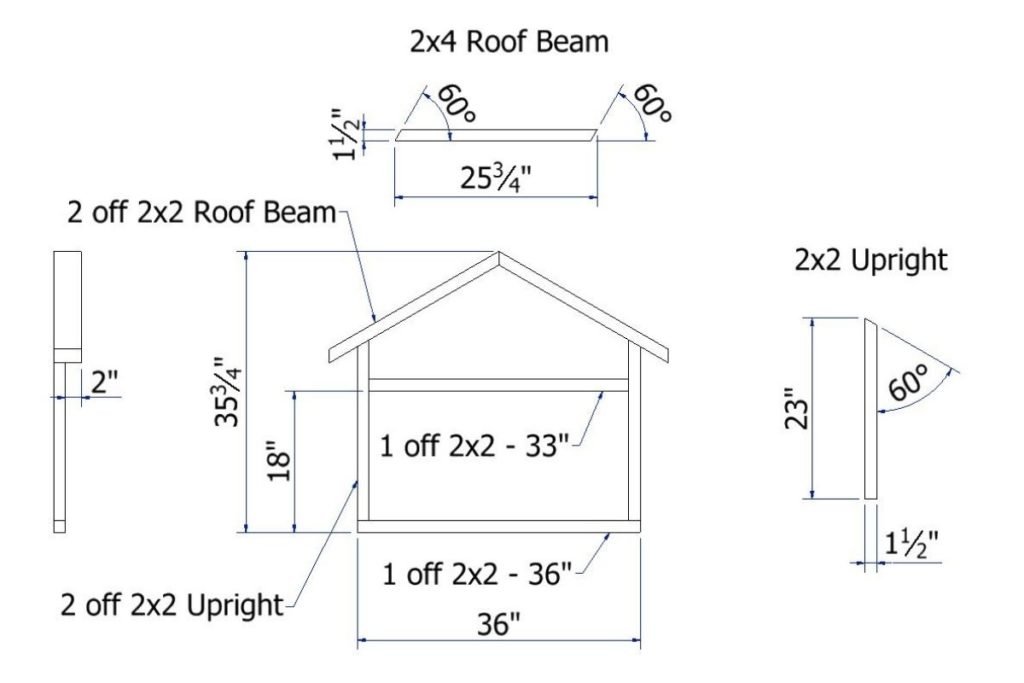
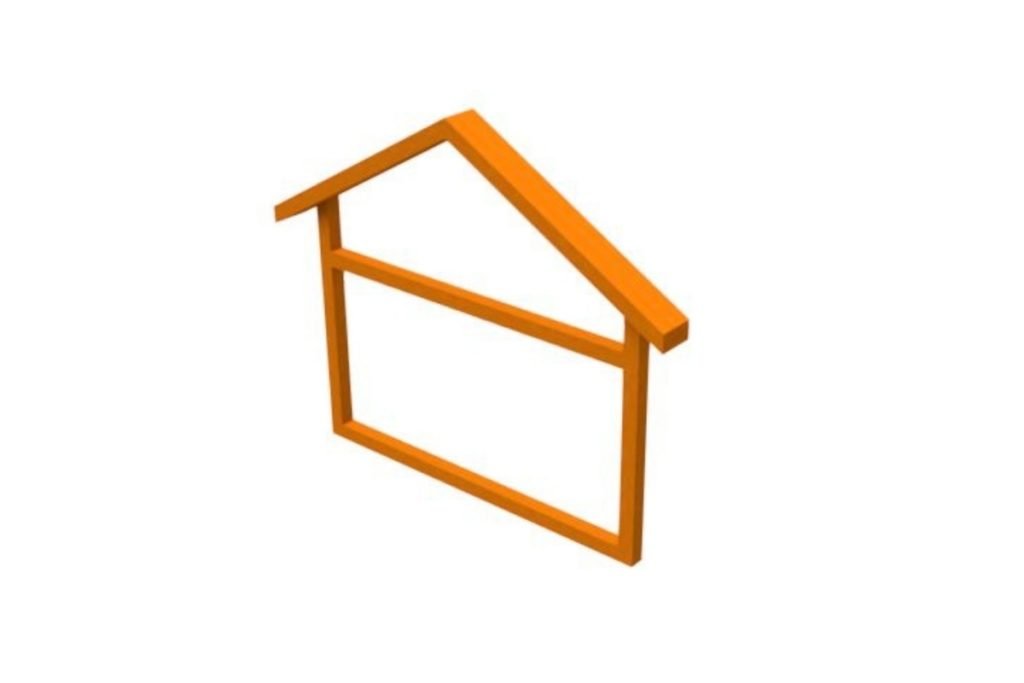
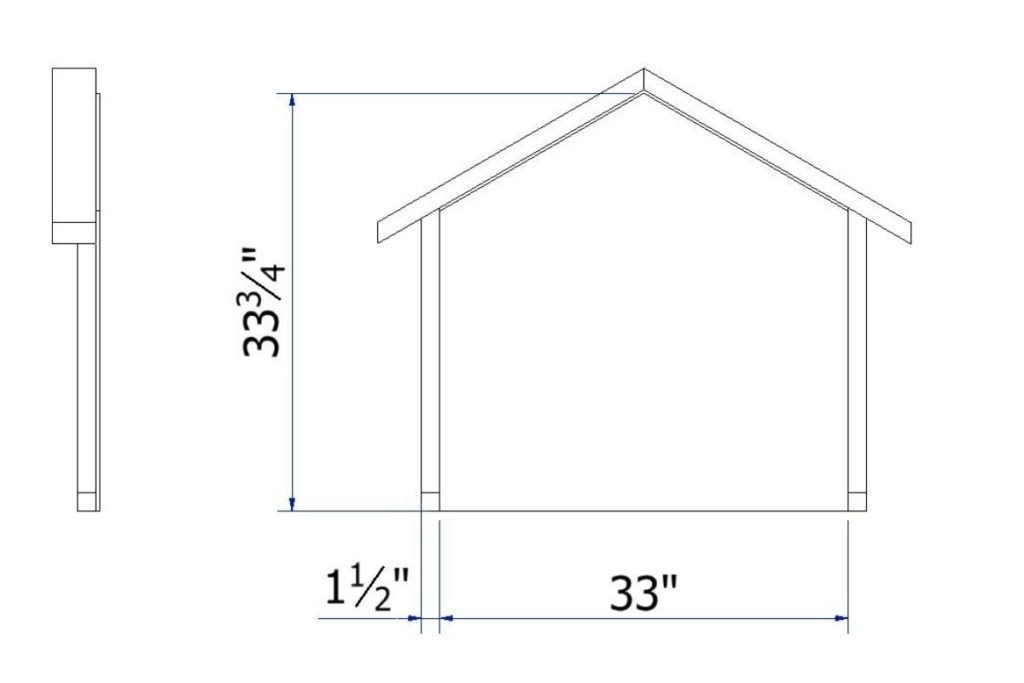
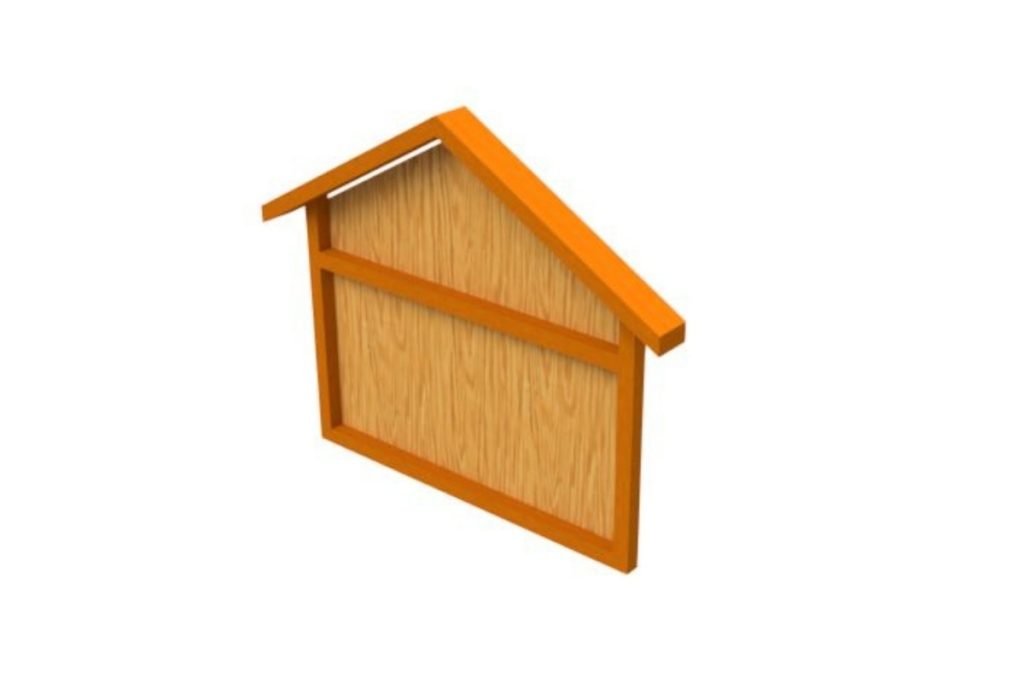
The measurements and required materials are precisely the same as for the front minus the vertical members located around the door, which are unnecessary.
As with each of these steps, following the drawing above and you can’t go wrong.
Step 5: Setting up All the Pieces
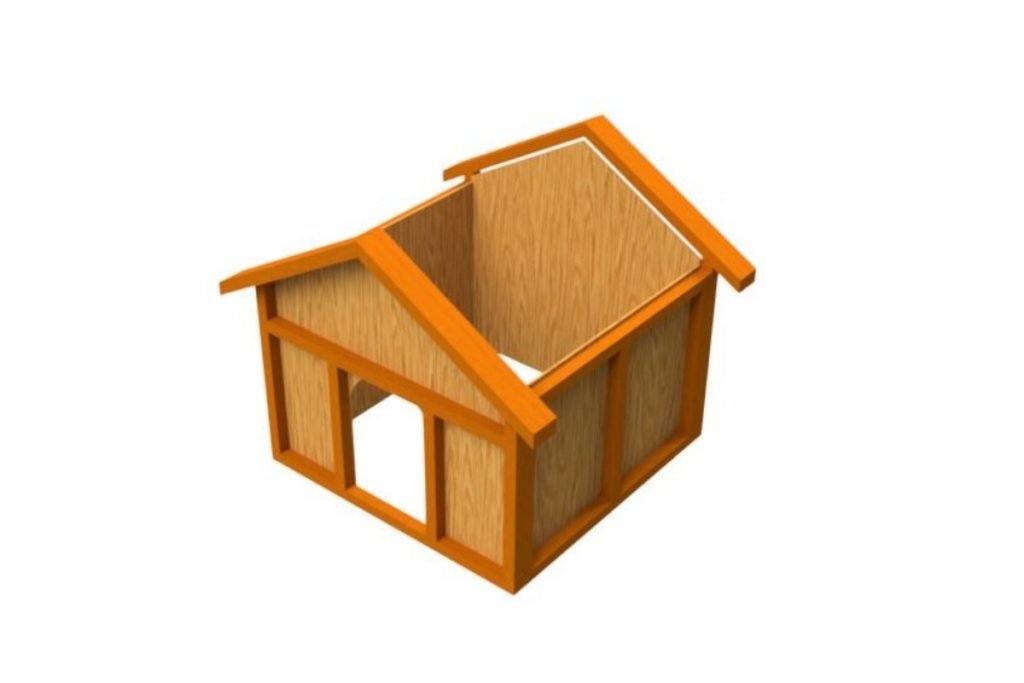
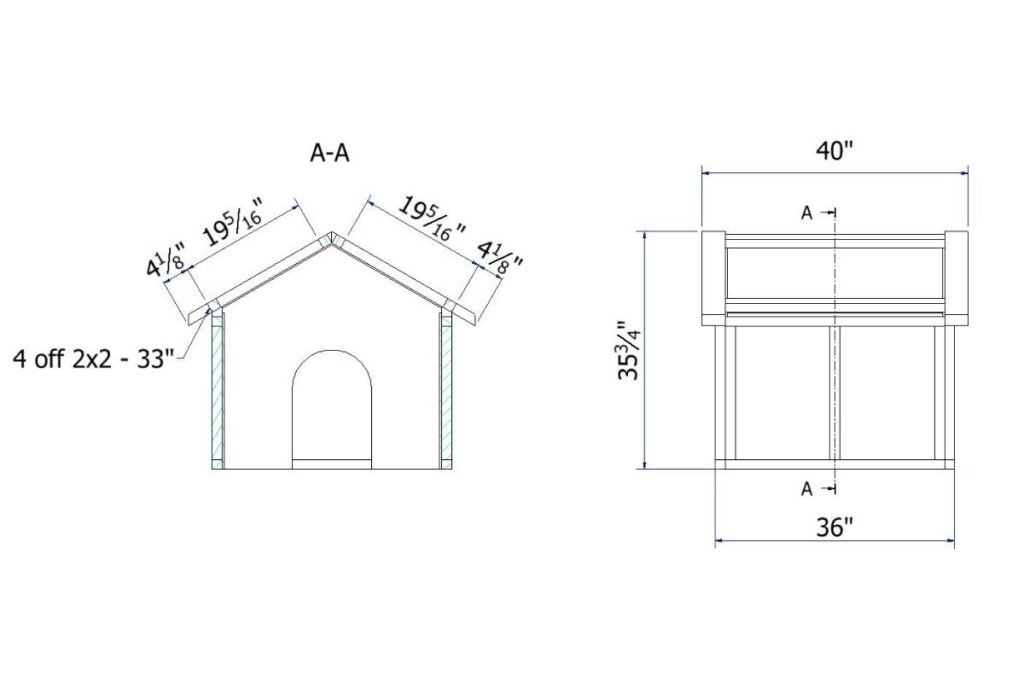
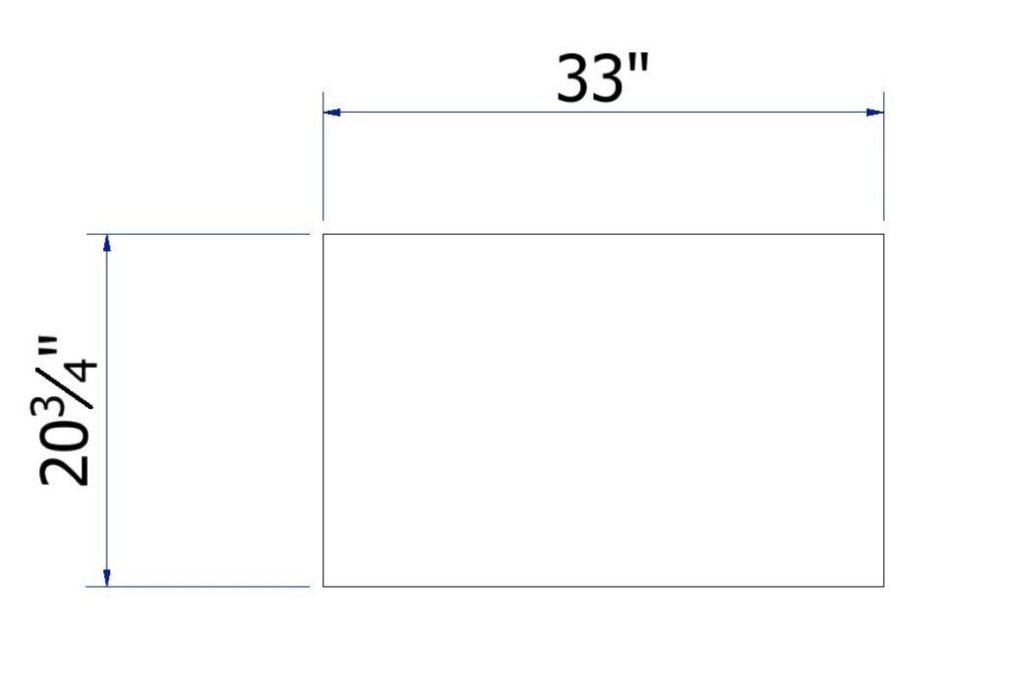
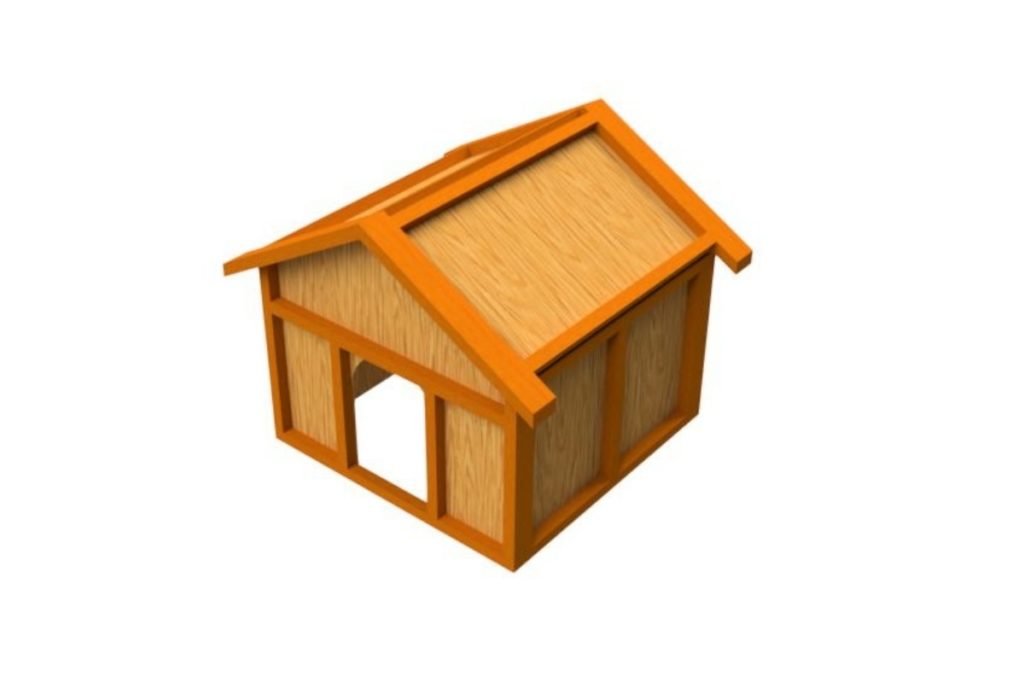
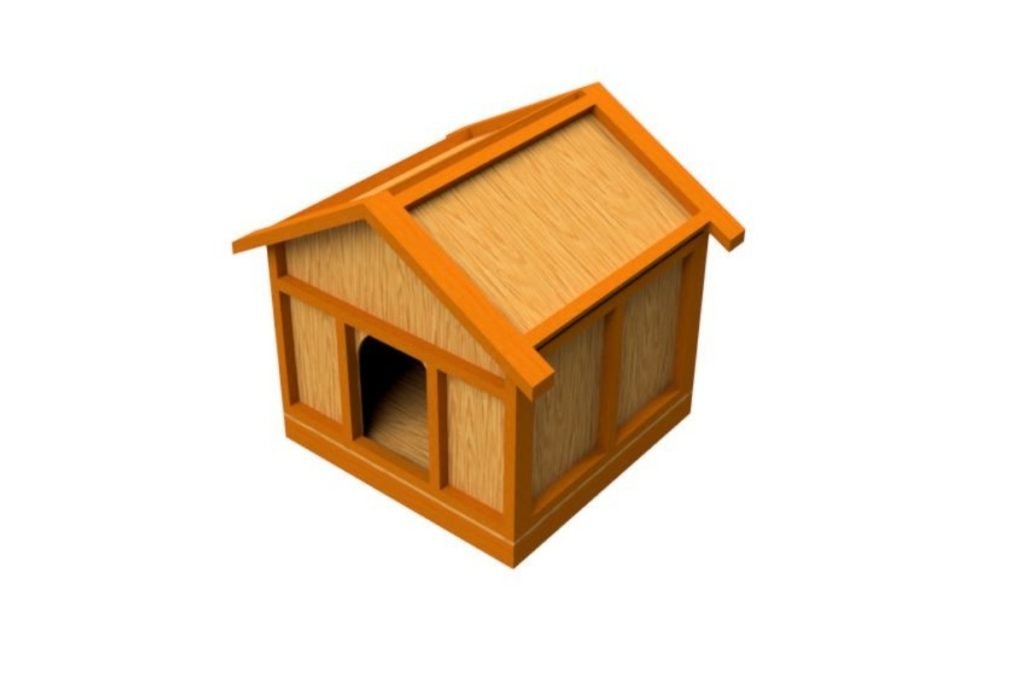
Now that you have finished cutting out the various parts and have gathered them together, you can work on the most thrilling part, which is using all of the components to build your dog’s dream house.
Before you do anything, make sure that the front, back, and side frames are reliably anchored. This should be done before you place the dog house’s final structure on its base.
To hold the rear, side, and frontal frames, you have to use 2-inch deck screws. After you have completed this, cut four cross members from wood sections that are 2×2 in size.
The four cross members have to be 33 inches long. They have to be held together securely using 2-inch deck screws; for positioning-related reference, you can check the drawing above.
You may be wondering why you need to fix all the frames before starting. This is done to make it easier to access the underside of the roof to install the plywood boards if you’re using them.
Following this, you will need to cut two 33 inch x 20 3/4 inch plywood boards. The two plywood boards should be secured on the interior side of the cross members using 3/4 inch deck screws.
When you have completed the sides and the roof, your next job will be to screw down the structure with the dog house’s base. Be patient, make sure that everything lines up, and use 3-inch deck screws.
Step 6: Installing the Insulation and Roof Boards


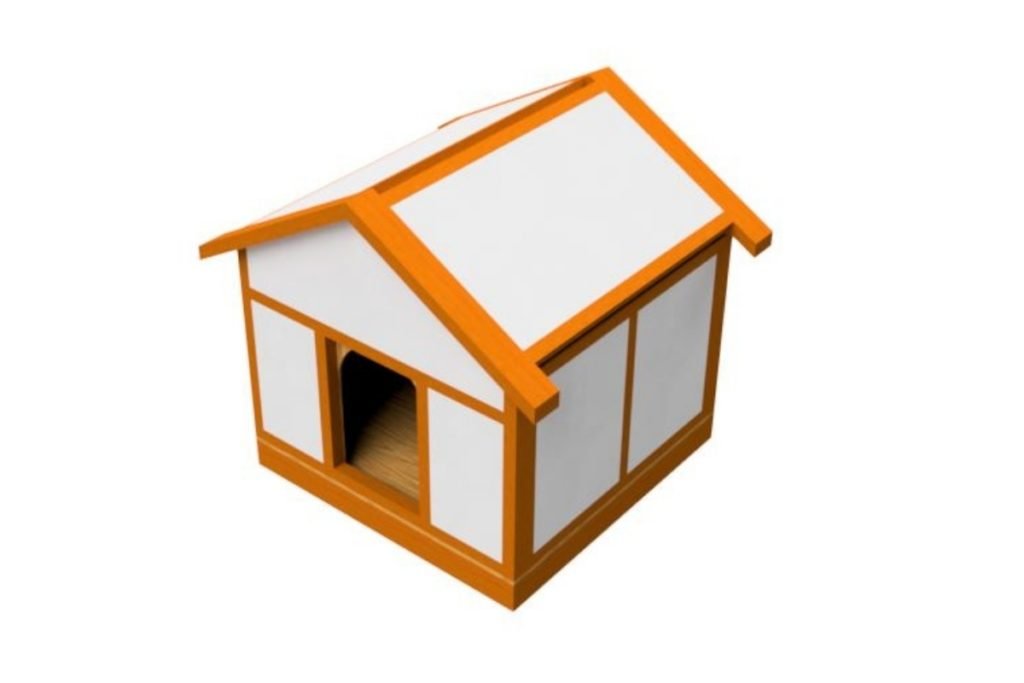
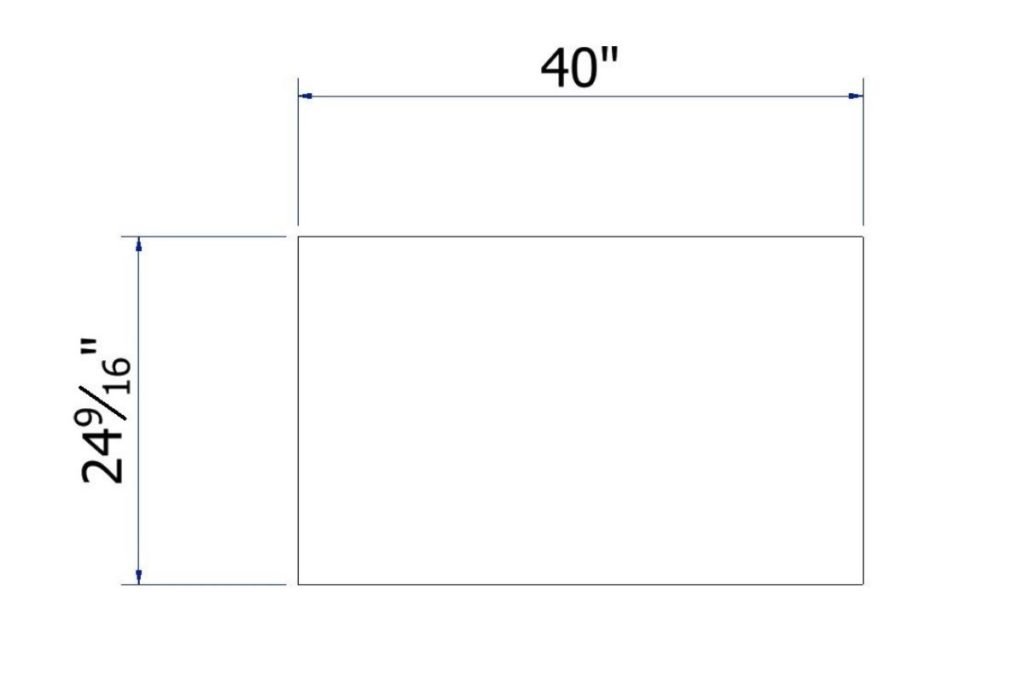
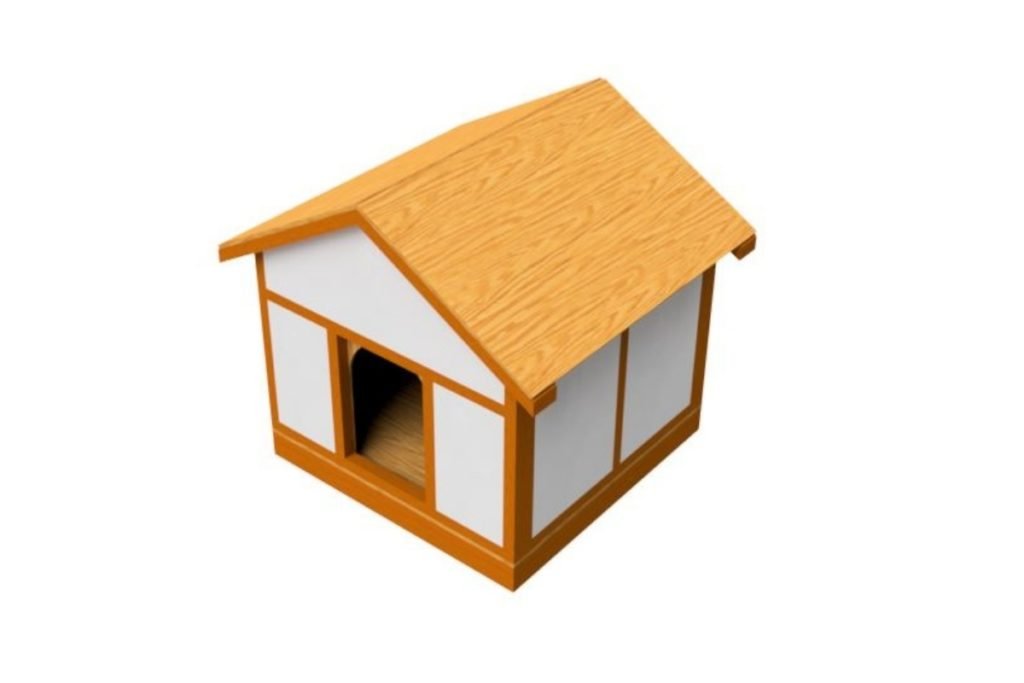
There are a lot of different options in terms of insulation materials available for you to choose from. The significant differences based on which option you choose will be the insulation quality and the price tag.
In this case, I have decided to use foam insulation boards because they are fast and easy to install. Ultimately it is down to your personal preference; you can use fiberglass, wood, and other types of insulation materials.
Cut the insulation in the following lengths:
Four pieces for the side
Two pieces for the front
Two pieces for the roof
Two pieces for the top
One piece for the rear
Refer to the diagram above so that you have a better idea of how the pieces fit together. The aim is for them to be appropriately implanted so that they can remain in place. Double-check if any are not secure; if they are not, use double-sided stick tape for extra support.
The final step is to cut up two pieces of plywood that are 1/2 inch thick. Additionally, these pieces of plywood must be 40 x 24 x 9/16 inches; they will be used for the roof’s ridge. You should use 3/4 inch deck screws to install them into place.
Step 7: Finalizing – Adding the Trim, Cladding, and Roofing
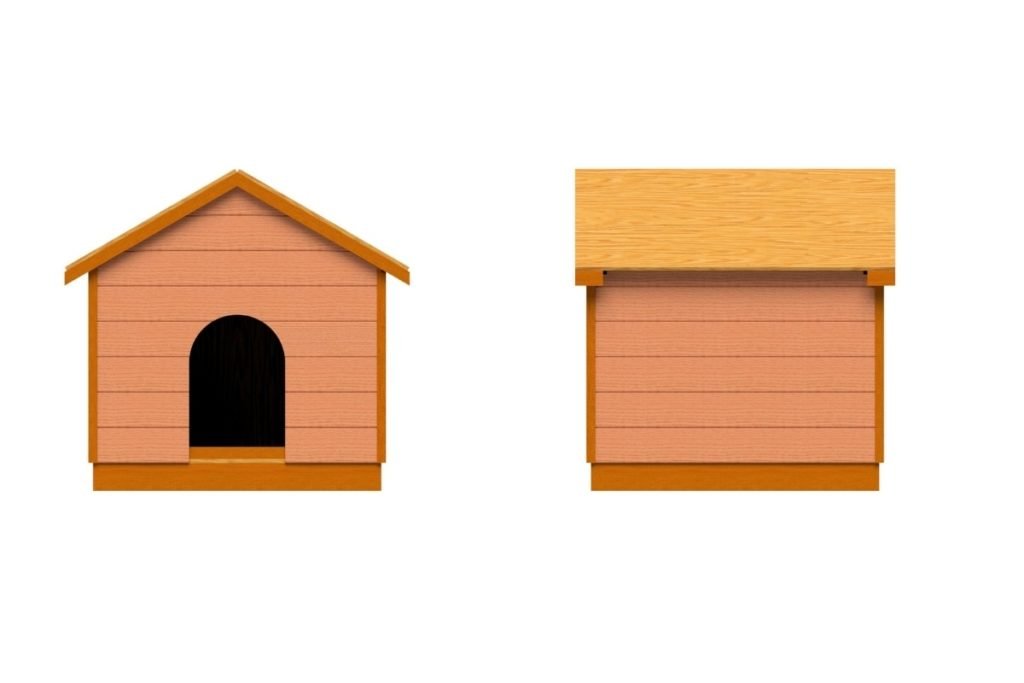
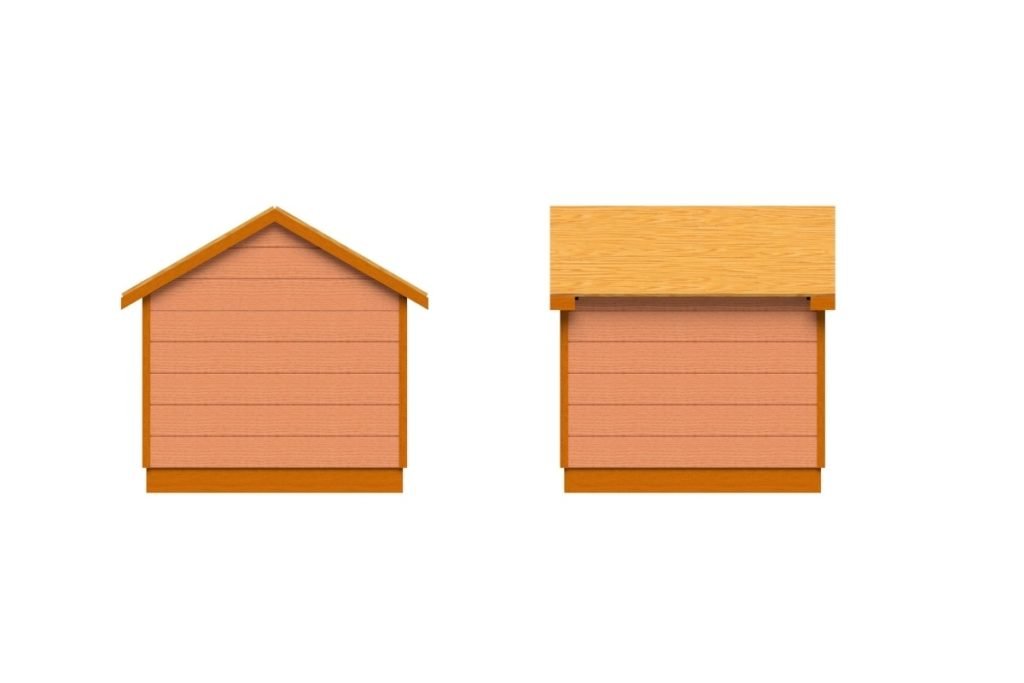
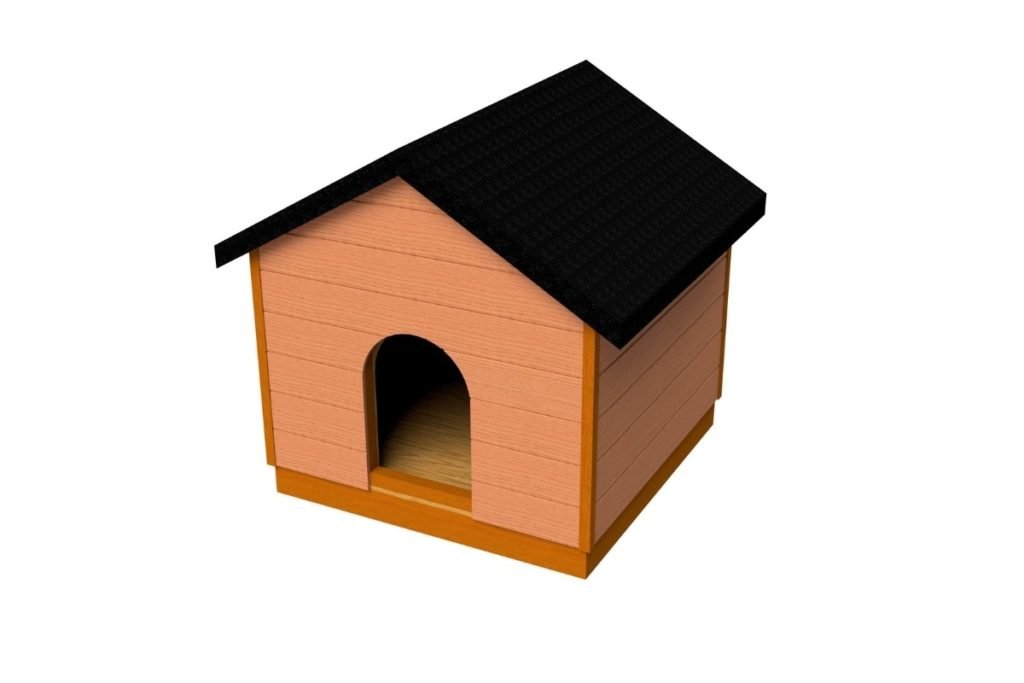
The construction phase has officially ended.
All you have to do now is to complete the cladding on the exterior walls. There are two main options available at your disposal, siding boards and tongue and groove.
I decided to go with the tongue and groove option, more specifically a 4 1/2 inches variation. However, any size can be used.
Many tutorials are present on the internet that will teach you how to trim the dog house. Alternatively, you can be creative and go with the flow.
The finishing touch, in this case, will be the material that you choose for the roof. There are many options, each providing different levels of security and style options. In this case, I went with felt as it is speedy and effortless to administer on your roof.
Conclusion
Hopefully, you found this short guide helpful and that your cherished pet enjoys the brand new home that you have personally designed for them.
Feel free to send me pictures of your four-legged friend relaxing in their dog house following a busy day of playtime!

